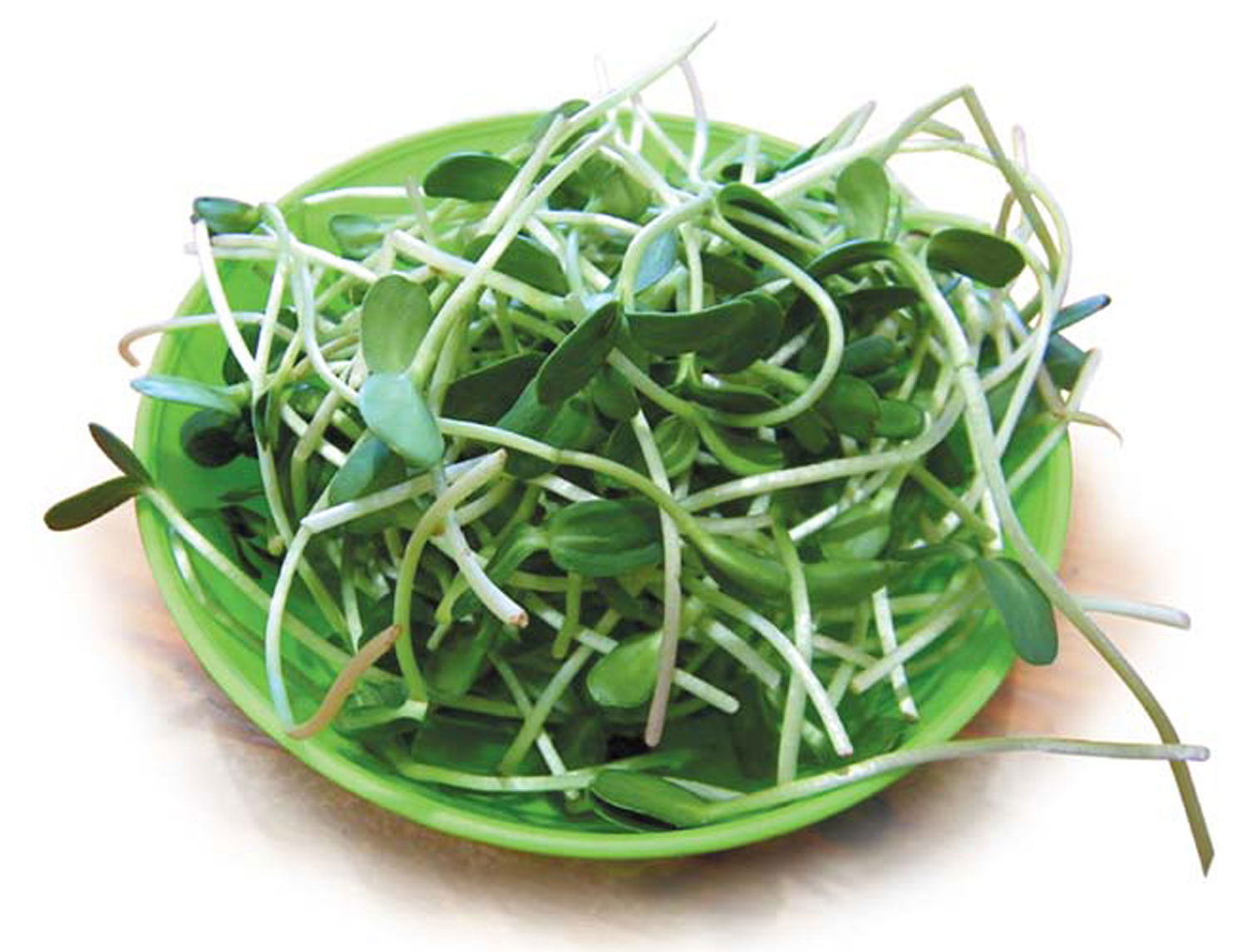With Sage Advice: Writer Digs into Sprouting
I recently took a leap into a popular food craze: Sprouting. My leap is probably more like a bunny hop for more committed foodies.
Sprouting has proved to be a bit like a science experiment that my husband and kids have kept tabs on, occasionally asking me along the way, “What are you doing?” and “Why?” I also heard some wonderment about why I did not just buy some sprouts at the store. The simplest answer is that sprouts are fresh, ready to eat, nutrient-dense power houses, and they are also pretty cool to watch grow, so why not try it?
I have to confess that after visiting a recommended sprouting website, I got cold feet. The flow chart of instructions looked hefty, time-consuming and more effort than growing a house plant, which I have not been successful at for a decade or more.
However, after a visit with Cindy Knigge, a certified raw food chef, graduate of Northern California Living Light Culinary Institute, and resident foodie at The Healthy Way Market in Sturgeon Bay, I was set back on a path of eager determination. But only after a promise of how easy the adventure would be, the purchase of an E-Z Sprouter and a few helpful tips from Knigge.
Knigge has been growing seeds into sprouts since the 1970’s and has three or four growing containers or trays in action in her kitchen to use to top sandwiches and create salads. She also teaches classes on sprouting at local health clinics and hospitals.
“Sprouts are a live food and they are nutritionally dense. They are one of the best food sources available to us because the sprout contains all the minerals and enzymes necessary to fuel our bodies,” Knigge said. “There are many more enzymes in a sprout than in raw fruits and veggies. And the shorter the sprout, the more nutrition it provides.”
Any viable seed will sprout. Larger seeds, such as mung bean or lentil, sprout quickly within three to five days. Smaller seeds, like radish, broccoli, fenugreek, alfalfa or clover, will sprout within 7 to 10 days. The time frame for sprouting depends on ambient temperature. Sprouts prefer conditions that are not too hot and not too cold.
“It is so easy to sprout,” Knigge said. “I started with a wide mouth glass mason jar with a nylon and rubber band on top and alfalfa seeds.” Now she uses containers made for sprouting, which helps keep things growing quickly and lessens the threat of contamination by mold.
The sprout container sits on the kitchen counter and the sprouts grow. If grown in the E-Z Sprouter type of container, the sprouts may not even need to be rinsed or can be rinsed less often than other methods (even so, I liked the idea of rinsing them daily and checking their progress). There are several methods for sprouting at home, including the jar method, E-Z Sprouter containers and sprouting trays.
For my own sprouts, I placed a tablespoon each of radish, broccoli and alfalfa seeds (purchased from a local health foods store) into the soaker chamber, added several inches of water for the seeds to soak overnight, rinsed the seeds in forceful tepid tap water for a few minutes and then placed them in the container on my kitchen counter. I rinsed them once a day, and watched them, well, sprout. In about a week when the seeds had little shoots, I rinsed them and let them sit in a colander in a sunny spot for half a day to green up. After that, they were stored in a covered glass jar in the refrigerator between uses and were good for one week.
I am pleased to say that most of my family members enjoyed them on sandwiches and salads. I used a mix of seeds that included radish, alfalfa and broccoli that produced a mixture of sprouts that were mild with a bit of zip and flavors similar in taste to a fresh pea pod with an attitude.
In addition to growing sprouts, Knigge introduced me to another sprouting concept: Nut Germination. Raw nuts, such as almonds or cashews, are soaked in water for 8 hours or overnight, rinsed and then can be consumed.
The process softens the nut, removes the enzyme inhibitors from the outer nut and makes the nuts easier for the body to digest and absorb the nutrients.
Germinated or soaked nuts can be used to make nut milk. Knigge shared that one cup of soaked almonds and one cup of water will produce whole almond milk. Add two cups of water to the nuts to get 2% milk consistency. Blend the nuts and water well, strain through a fine cheese cloth and enjoy.
If you are not ready to take the leap into growing your own sprouts, sprouts are grown locally and are available at local health food stores. The Healthy Way Market currently gets salad mix sprouts, pea shoots and sunflower sprouts from Ocean Gold in Shiocton.
Happy sprouting!
RECIPES





